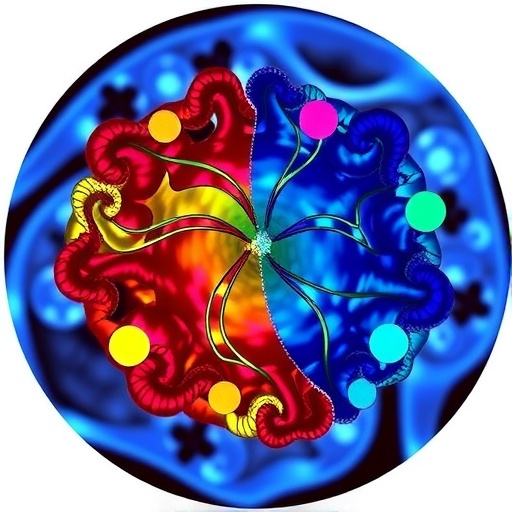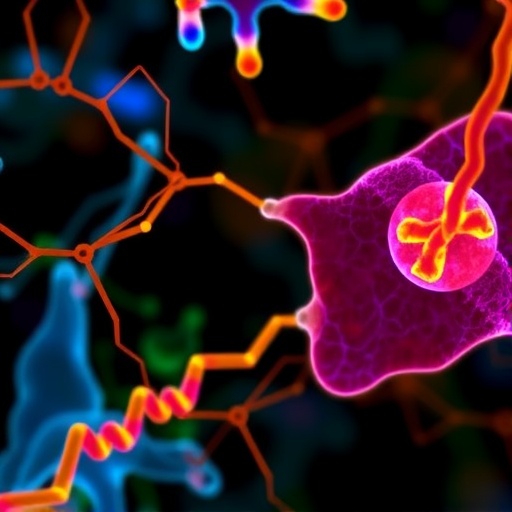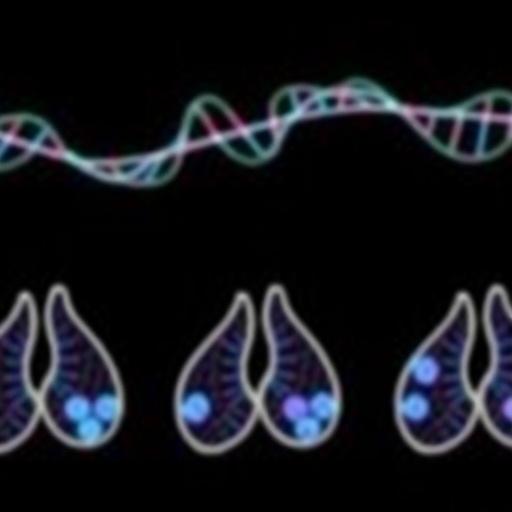In the relentless battle against HER2-positive breast cancer, trastuzumab (commonly known by its brand name, Herceptin) has long stood as a beacon of hope. However, a formidable challenge continues to undermine its efficacy: treatment resistance. An intriguing new study by Zhao and colleagues, published in Medical Oncology, shines a spotlight on the molecular underpinnings of this resistance phenomenon, unraveling the intricate role played by non-coding RNAs (ncRNAs). This emerging evidence ushers us closer to decoding the biological enigma that hinders trastuzumab’s full therapeutic potential and opens a fresh frontier for tailored cancer interventions.
HER2-positive tumors are notorious for their aggressive nature, accounting for approximately 20-25% of all breast cancer cases globally. These malignancies are characterized by an overexpression of the human epidermal growth factor receptor 2 (HER2), which drives rapid cellular proliferation and tumor growth. Trastuzumab, a monoclonal antibody specifically targeting the HER2 receptor, revolutionized treatment paradigms upon introduction, dramatically improving patient outcomes. Yet, despite its groundbreaking success, many patients eventually develop resistance, leading to disease progression and diminished survival rates.
The crux of Zhao and colleagues’ investigation rests upon the biological roles of ncRNAs—formerly dismissed as “junk” DNA but now recognized as critical regulators of gene expression and cellular function. These RNA molecules do not translate into proteins but wield influence through controlling transcriptional and post-transcriptional dynamics. Among the various classes of ncRNAs, long non-coding RNAs (lncRNAs), microRNAs (miRNAs), and circular RNAs (circRNAs) have attracted intense scrutiny due to their involvement in oncogenic pathways and drug resistance mechanisms.
.adsslot_DfmK21CQRa{ width:728px !important; height:90px !important; }
@media (max-width:1199px) { .adsslot_DfmK21CQRa{ width:468px !important; height:60px !important; } }
@media (max-width:767px) { .adsslot_DfmK21CQRa{ width:320px !important; height:50px !important; } }
ADVERTISEMENT
In particular, the study delineates how specific ncRNAs contribute to the molecular circuitry that facilitates trastuzumab resistance. For instance, certain miRNAs exert regulatory control by binding to messenger RNAs (mRNAs) encoding proteins pivotal to apoptosis and cell cycle progression, effectively rewiring cellular survival pathways in favor of tumor persistence. Dysregulation of these small RNAs modulates the HER2 signaling cascade, promoting resistance through altered receptor internalization, signaling amplification, or downstream effector activation.
Moreover, lncRNAs emerge as versatile molecular scaffolds coordinating complex interactions between DNA, RNA, and proteins. Zhao et al. highlight evidence where particular lncRNAs act as competitive endogenous RNAs (ceRNAs), sequestering miRNAs that would otherwise suppress oncogenic targets. This ceRNA network fosters a protective niche for cancer cells against trastuzumab-induced cytotoxicity. For example, overexpressed lncRNAs can shield key players in cell proliferation signaling pathways, such as the PI3K/Akt/mTOR axis, from miRNA-mediated inhibition, thus sustaining tumor growth despite therapy.
Circular RNAs, which form closed loop structures conferring exceptional stability, also play a significant role. The research underscores how certain circRNAs can sponge miRNAs or interact with RNA-binding proteins, thereby modulating gene expression in a way that favors resistance. These circular entities often act as molecular decoys, disengaging the inhibitory actions of miRNAs on their mRNA targets and consequently enhancing oncogenic signaling pathways that allow tumor cells to thrive under trastuzumab pressure.
Beyond the direct interaction with signaling components, ncRNAs also regulate the tumor microenvironment, influencing immune cells, angiogenesis, and extracellular matrix remodeling. Zhao’s team explores the possibility that ncRNAs mediate crosstalk between cancer cells and surrounding stromal or immune cells, thereby fostering an immunosuppressive milieu or facilitating the establishment of protective niches against therapeutic assault. This multifaceted role of ncRNAs suggests that resistance is not just a cell-intrinsic event but a complex system-wide adaptation.
The study utilizes cutting-edge molecular biology techniques such as high-throughput RNA sequencing and RNA immunoprecipitation assays to map the landscape of ncRNA expression in trastuzumab-resistant versus sensitive HER2-positive tumor samples. The data elucidate distinct expression signatures that reflect the dynamic rewiring of regulatory networks underpinning resistance. These molecular fingerprints hold promise as biomarkers for early detection of resistance onset or as therapeutic targets to restore drug sensitivity.
By integrating bioinformatics analyses with functional validation experiments, Zhao and colleagues identify several candidate ncRNAs whose modulation can resensitize resistant tumor cells to trastuzumab in vitro. These findings present a compelling rationale for the development of ncRNA-based therapeutics. Potential strategies include the use of antisense oligonucleotides, miRNA mimics, or small molecule inhibitors designed to disrupt pathological ncRNA interactions, thereby dismantling the resistance machinery.
Importantly, the implications of this research extend beyond breast cancer. Mechanistic parallels can be drawn with other HER2-positive malignancies, such as gastric cancer, where trastuzumab resistance similarly impedes clinical outcomes. The universality of ncRNA functions across cancer types underscores the broader impact of these findings and the necessity for continued exploration in diverse tumor contexts.
The complexity of ncRNA-mediated resistance also challenges existing paradigms in precision oncology. It demands an evolution in therapeutic strategies from solely targeting proteins to encompassing the regulatory RNAs that modulate those proteins. This shift heralds a new era where dynamic RNA networks are clinical targets, offering potential routes to circumvent resistance and achieve sustained remission.
In sum, the work of Zhao et al. spotlights ncRNAs as pivotal architects of trastuzumab resistance in HER2-positive tumors. The elucidation of their diverse molecular mechanisms enriches our understanding of resistance biology and carves avenues for novel interventions. As metastasis and relapse continue to cast long shadows over cancer therapy, targeting ncRNA pathways emerges as a beacon of hope to enhance response durability and transform patient prognoses.
Future investigations will undoubtedly delve deeper into the ncRNA interactome and its interplay with epigenetic regulators, proteostasis networks, and immune checkpoints. The integration of single-cell transcriptomics and spatial RNA profiling may reveal yet undiscovered facets of resistance heterogeneity and plasticity. Collaborative efforts bridging basic science, translational research, and clinical trials will be essential to translate these molecular insights into tangible therapeutic gains.
Ultimately, the findings propel the frontier of oncology toward a comprehensive model where ncRNAs are recognized not merely as passive genomic elements but as active, versatile players shaping cancer behavior and therapeutic responsiveness. With mounting evidence now underscoring their role in drug resistance, ncRNAs figure prominently on the radar of future cancer research, promising to redefine how we approach the fight against one of the most formidable forms of breast cancer.
Subject of Research: Mechanism of non-coding RNA (ncRNA) involvement in trastuzumab resistance in HER2-positive tumors.
Article Title: The mechanism of ncRNA in trastuzumab resistance in HER2-positive tumors.
Article References:
Zhao, H., Hu, H., Li, Z. et al. The mechanism of ncRNA in trastuzumab resistance in HER2-positive tumors. Med Oncol 42, 415 (2025). https://doi.org/10.1007/s12032-025-02976-y
Image Credits: AI Generated
Tags: aggressive nature of HER2 tumorsbreast cancer survival ratesgene regulation by ncRNAsHER2-positive breast cancer treatmentinnovative cancer treatment strategiesmolecular mechanisms of cancer resistancencRNA and trastuzumab resistanceovercoming trastuzumab resistancerole of non-coding RNAs in tumorstailored interventions for breast cancertargeting HER2 for cancer therapytrastuzumab efficacy challenges





